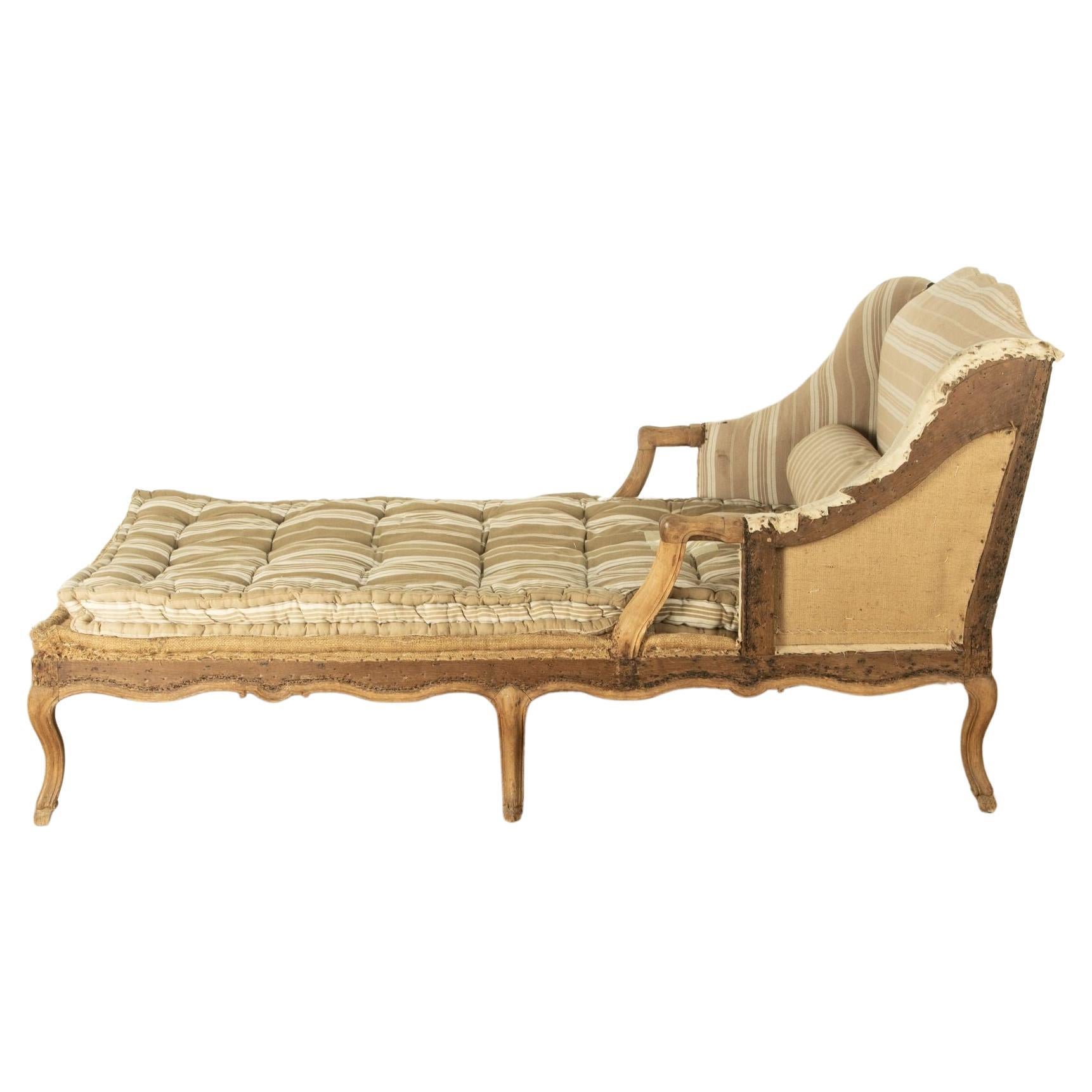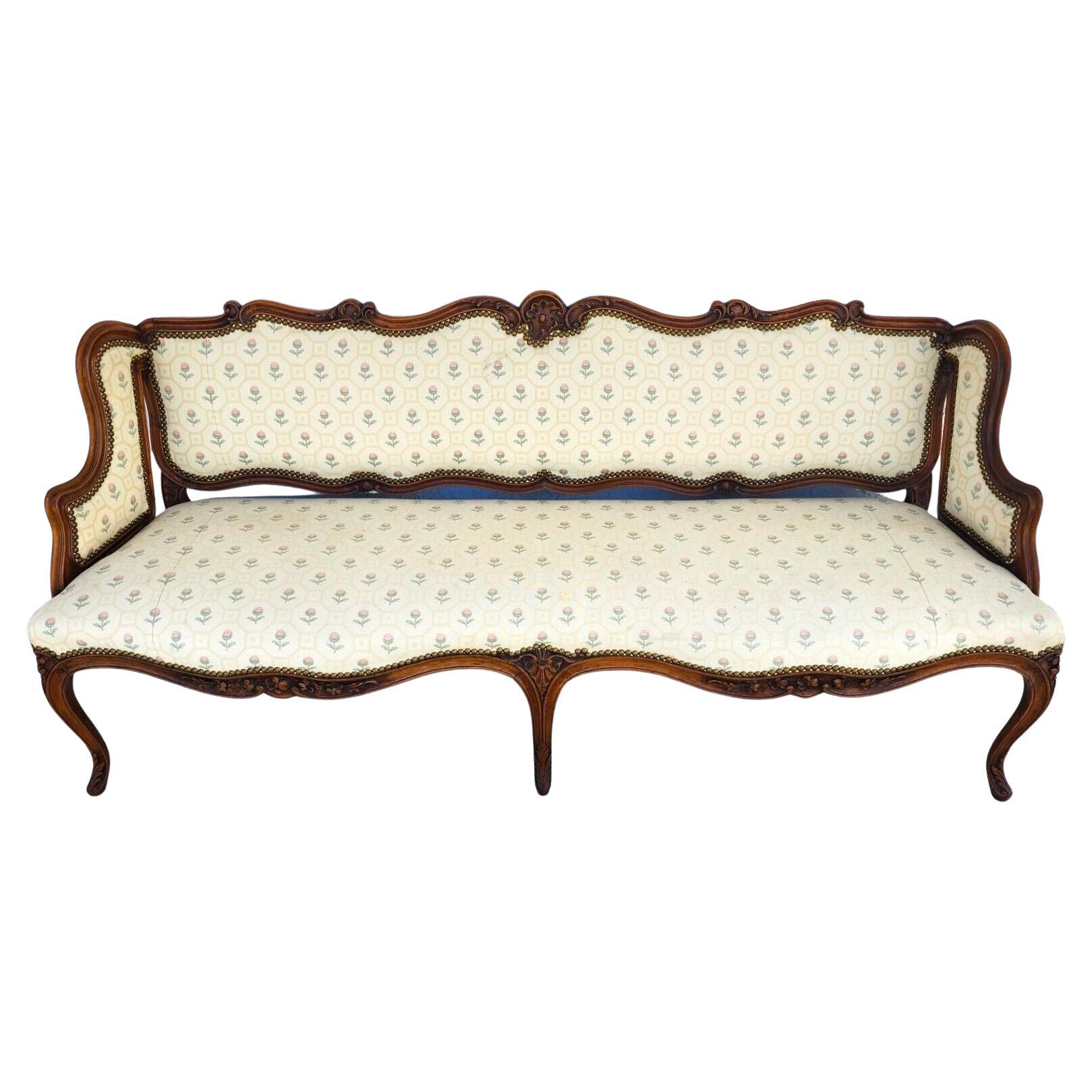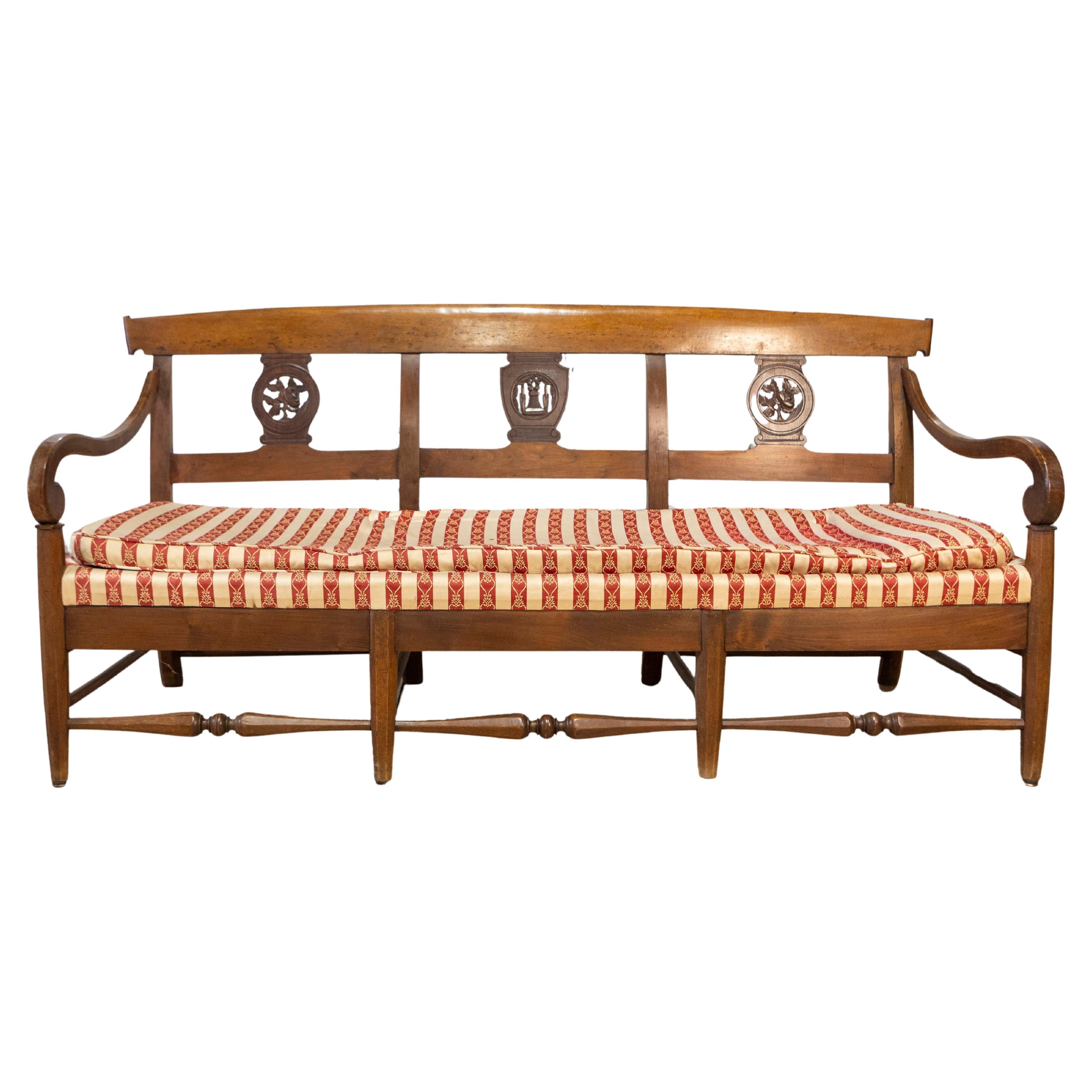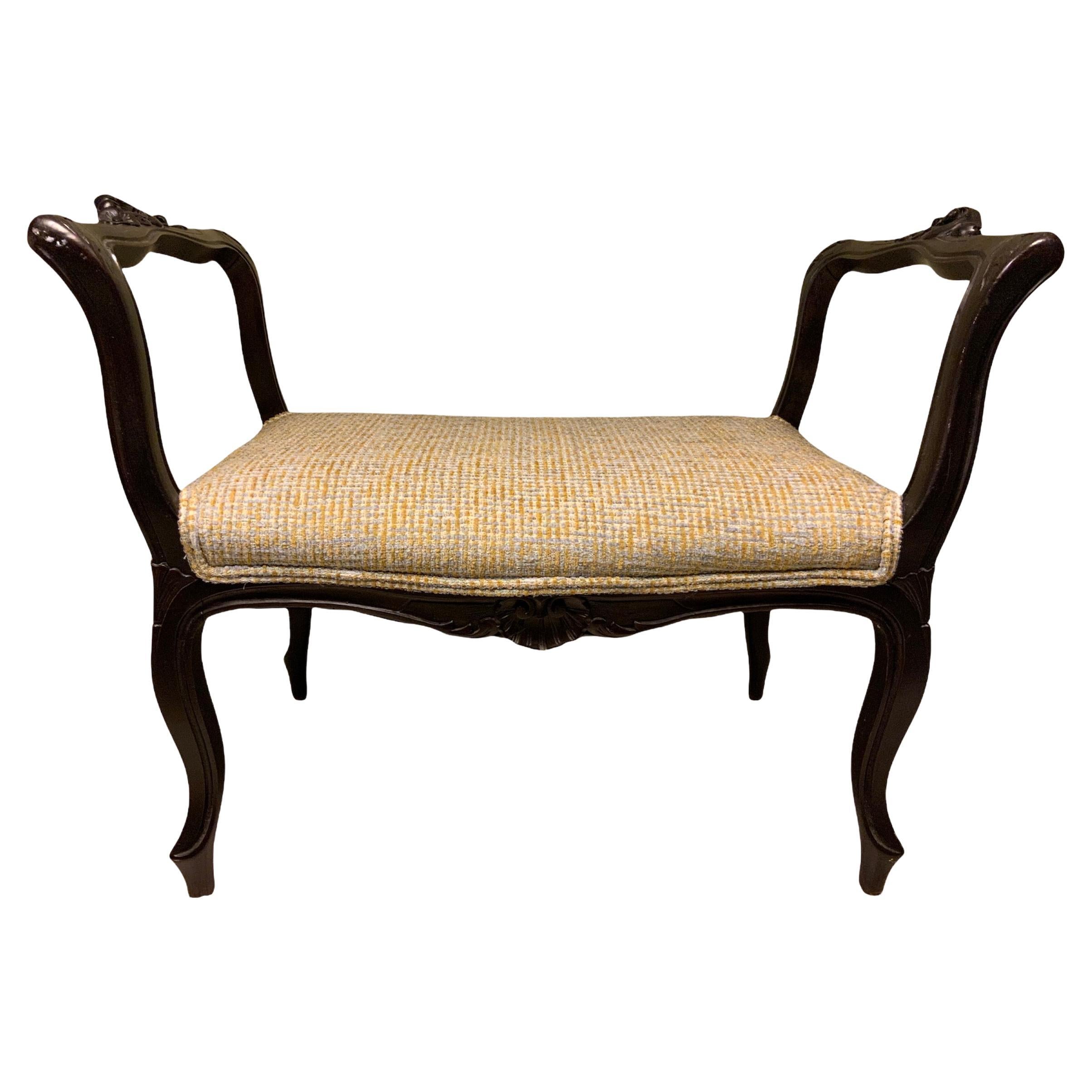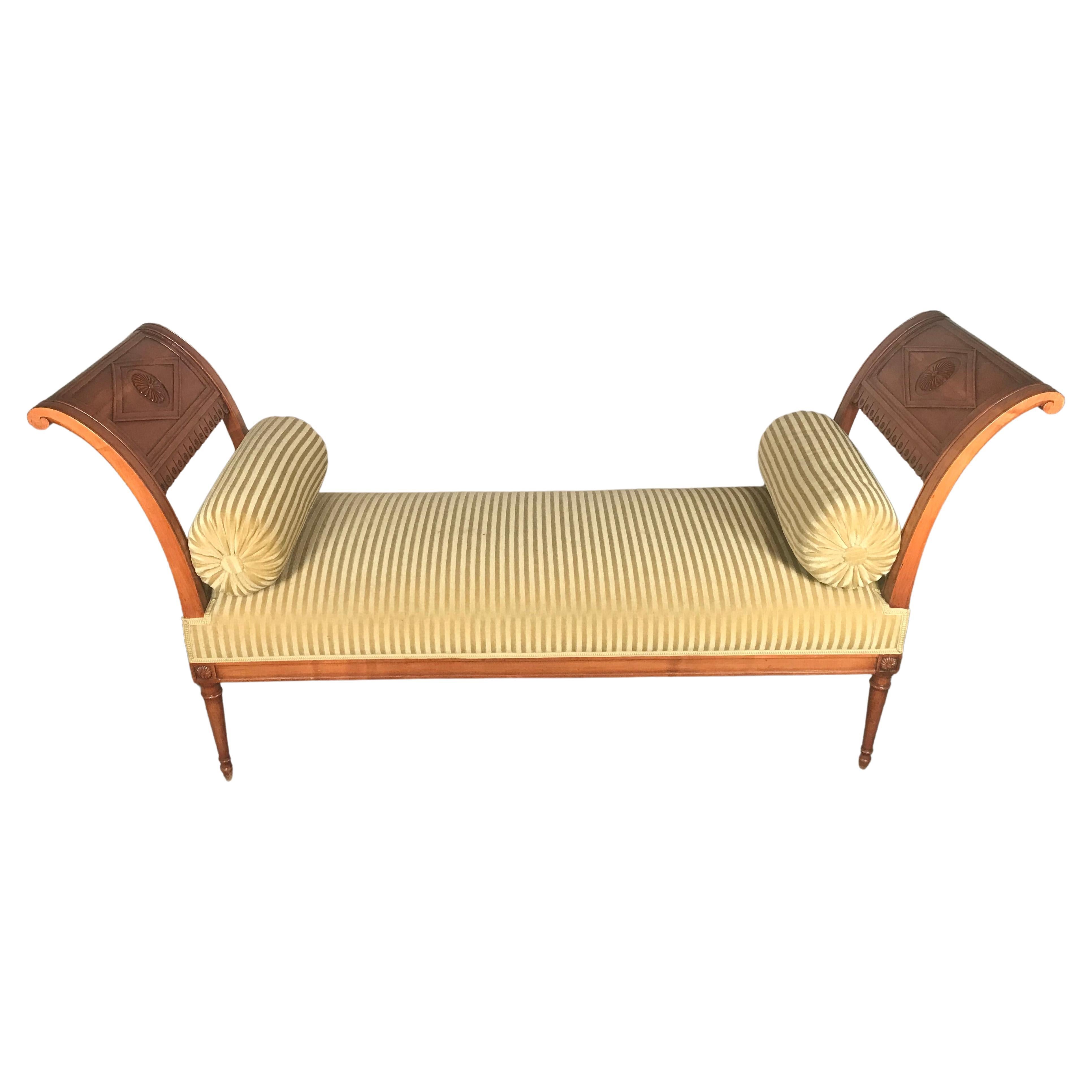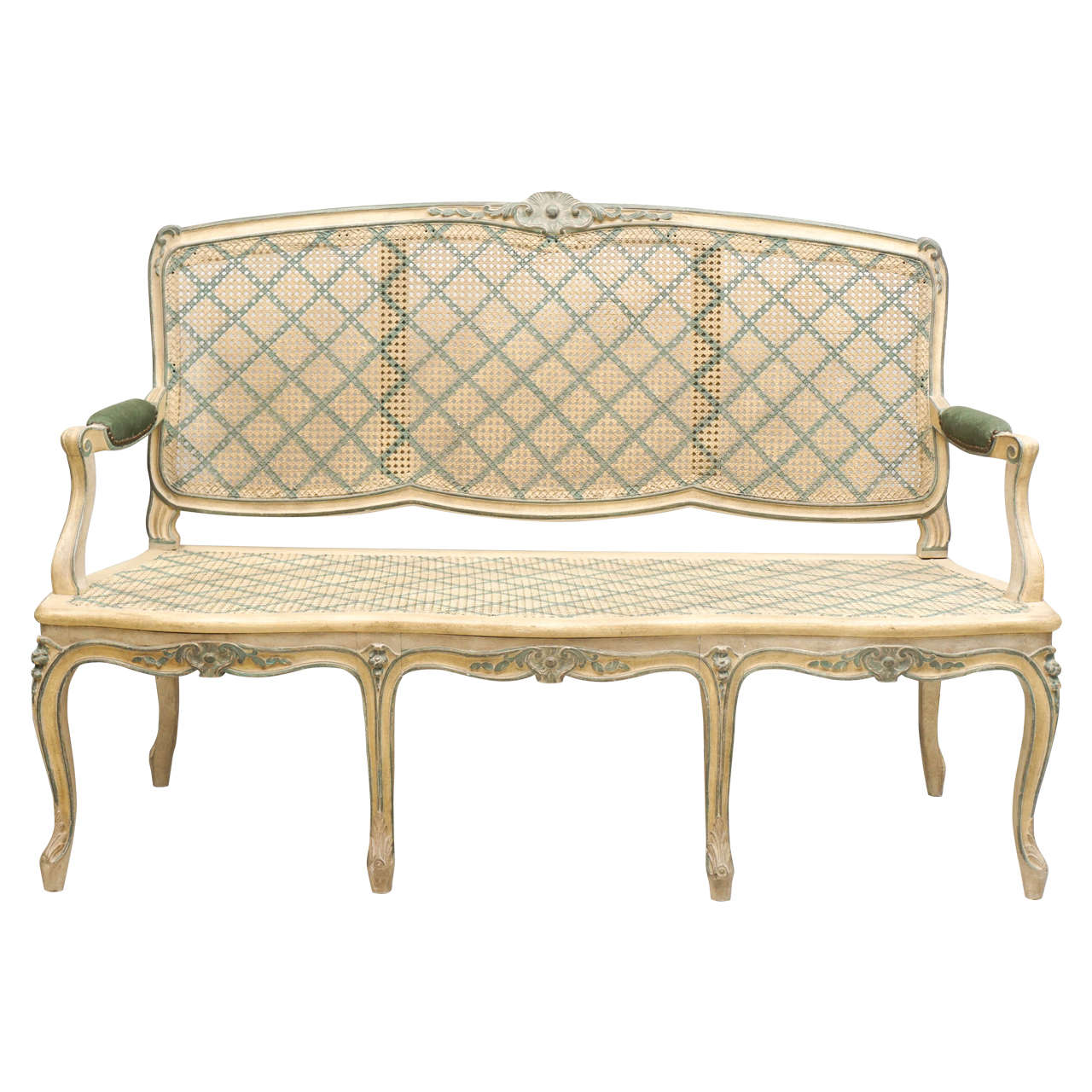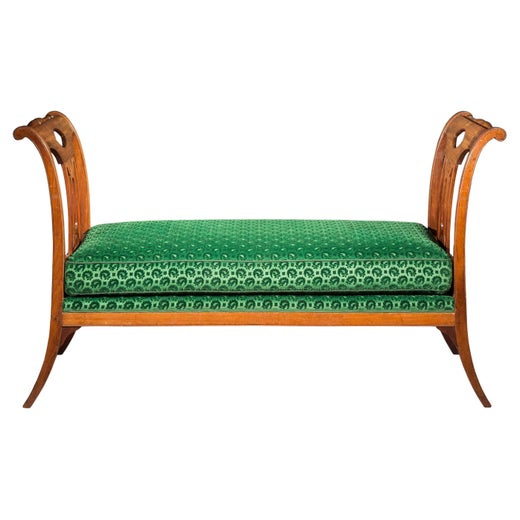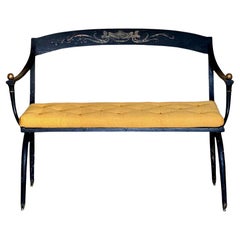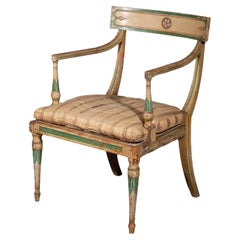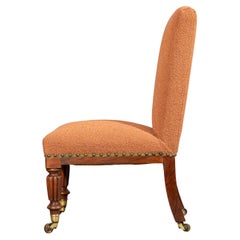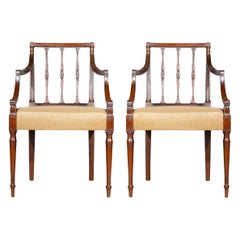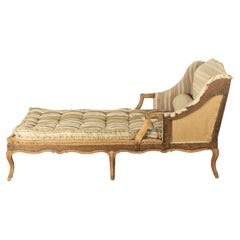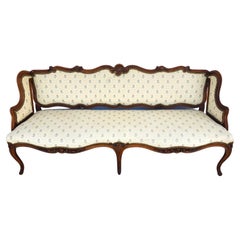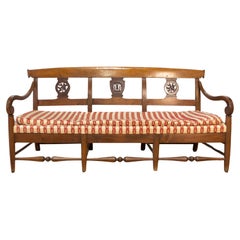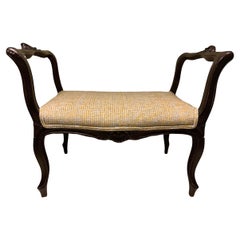18th Century Louis XVI Bedroom Bench or Daybed by George Jacob
About the Item
- Creator:Georges Jacob (Cabinetmaker)
- Dimensions:Height: 35.44 in (90 cm)Width: 63 in (160 cm)Depth: 23.63 in (60 cm)Seat Height: 19.49 in (49.5 cm)
- Style:Directoire (Of the Period)
- Materials and Techniques:
- Place of Origin:
- Period:
- Date of Manufacture:1795
- Condition:Wear consistent with age and use. Minor fading. Ready for placement and immediate use. Great colour and patination, minor old restorations. Structurally sturdy. The seat newly upholstered in sumptuous bottle green Lelievre gauffrage velvet mohair.
- Seller Location:Richmond, GB
- Reference Number:1stDibs: LU1781238422082
Georges Jacob
Georges Jacob became one of the finest Parisian maîtres ebénistes (master cabinetmakers) of the late 18th and early 19th centuries, despite his humble beginnings and lack of formal training. Renowned throughout Europe for his opulent Louis XVI designs and grand gilt work, Jacob attracted royals, nobiles and other wealthy clientele.
Jacob was born in 1739 to a peasant family in Cheny, Burgundy. At 16, he moved to Paris to become an apprentice to chairmaker Jean-Baptiste Lerouge. While working for Lerouge, Jacob met Louis Delanois, a young menuisier (carpenter) who specialized in seating. Delanois’s distinct Rococo style and neoclassical taste influenced Jacob, whose own talents for design led him to become a maître ebéniste, in 1765.
In 1767, Jacob opened his first furniture-making business, employing several gilders, carvers and joiners to handcraft his designs. His atelier ornately decorated beds, armchairs, benches, screens and center tables with giltwood motifs such as fluting, beading, ribbons and guilloches. Word spread of Jacob’s exceptional furniture among the European elite, capturing the attention of Queen Marie Antoinette, Sweden’s King Gustav III, the United Kingdom’s King George IV and several German princes.
However, in 1789, Jacob lost several of his aristocratic clients at the onset of the French Revolution. Despite his associations with French royalty and nobility, Jacob survived the revolution with the help of his friend, Republican painter Jacques-Louis David.
In 1796, Jacob retired and left his business to his two sons, Georges and François-Honoré-Georges Jacob-Desmalter, also known as Jacob Frères. Under the ownership of his sons, the workshop became a furniture supplier to Emperor Napoleon.
Jacob’s pieces are held in the collections of several international museums and collections, including the Chateau de Chantilly and Chateau de Fontainebleau; the Louvre and the Musée des Arts Décoratifs, in Paris; the Wallace Collection, in London; the Museum of Fine Arts Boston; and the Metropolitan Museum of Art, in New York.
On 1stDibs, find a selection of antique Georges Jacob seating, tables, case pieces and storage cabinets.
- ShippingRetrieving quote...Shipping from: Richmond, United Kingdom
- Return Policy
More From This Seller
View AllAntique Late 19th Century Belgian Neoclassical Revival Benches
Wood, Cane, Upholstery
Antique Early 19th Century English Regency Armchairs
Upholstery, Paint
Antique 1810s European Regency Slipper Chairs
Walnut
Antique Late 18th Century European George III Armchairs
Upholstery
Antique 18th Century European Georgian Armchairs
Walnut
Antique 19th Century Chinese Qing Furniture
Wood
You May Also Like
Antique 19th Century French Louis XV Daybeds
Fabric, Beech
Antique Mid-19th Century Louis XV Benches
Cotton, Fruitwood
Antique 19th Century French Neoclassical Benches
Walnut
Early 20th Century Unknown Rococo Benches
Wood
Antique 1820s French Neoclassical Daybeds
Cherry
Early 20th Century French Louis XV Benches
Cane, Wood
